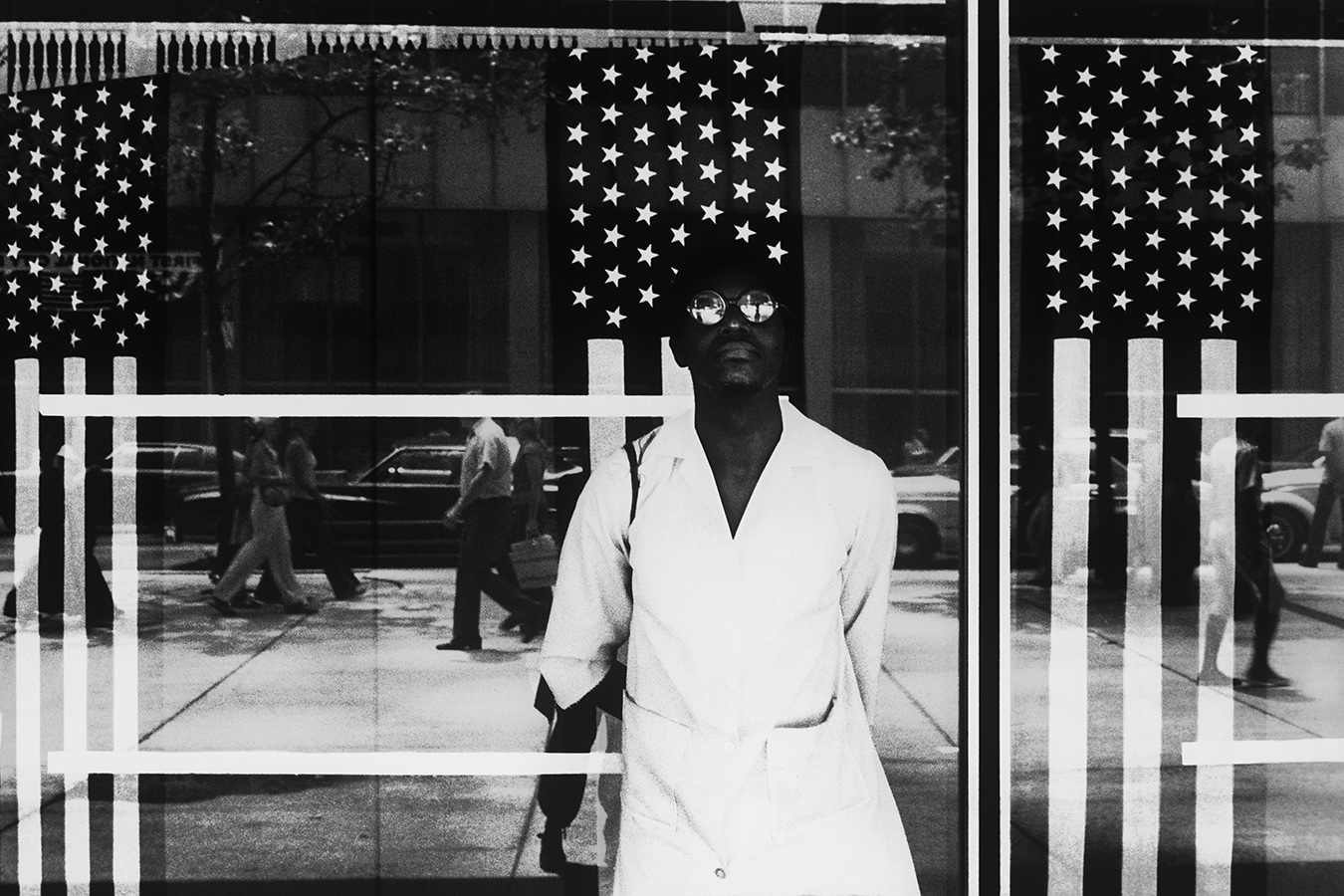Ming Smith’s lyrical portrait of Black America
- Text by Miss Rosen
- Photography by Ming Smith, courtesy of Nicola Vassell Gallery

Throughout her five-decade career, Ming Smith has broken through boundaries she has faced as a Black American artist coming of age during the Civil Rights Movement. Born in Detroit, raised in Columbus, Ohio, and educated at Howard University in Washington D.C., Smith moved to New York in the 1970s to work as a model alongside pioneers including Grace Jones, Toukie Smith, and Bethann Hardison.
“I didn’t call myself a photographer, but I was constantly shooting,” the artist said in Ming Smith: An Aperture Monograph. “I was just a young person in New York trying to find my way, and I had to support myself, so I took a job as a model.”
While on a go-see, Smith heard Kamoinge members Louis Draper and Anthony Barboza discussing photography. She showed Draper her work and he invited Smith to become the first woman to join the legendary photography collective. “That was a major awakening,” Smith said.

Grace Jones, Studio 54 (New York), 1970s

Star of Hope, 1978
Smith used the camera the way a musician plays their instrument, using photography to express the deepest reaches of her inner self. Never one to seek status, Smith simply followed her instincts and in doing so, became the first Black woman to have her work in the permanent collection of the Museum of Modern Art.
Half a century later, Smith is receiving her proper due, most recently with Evidence, the inaugural exhibition at Nicola Vassell Gallery in New York. “Ming and I discovered there are several parallels in our path,” says Vassell, who also got her start moving to New York to work as a model, albeit it in the ‘90s.
“We had similar experiences and discovered that we both look at the world without restriction – the open road is part of the creative process and all encounters are welcome. It’s a very unique perspective for a woman artist of a certain age. You’ve had to challenge so much that it’s like a walking revolution.”

Dakar Roadside with Figures (Senegal), 1972

Amen Corner Sisters (Harlem, New York), 1976
Indeed, Smith is the quiet storm, always grounded where she stands, refusing to give in to prevailing notions or trends. “Ming pushed back against the domain of the male perspective and the comfort of what people had grown accustomed to and found a new territory all her own,” says Vassell.
Whether photographing scenes of daily life on the streets of Harlem or Dakar, or making timeless portraits of luminaries including Sun Ra and Brassaï, Evidence is proof of Smith’s unerring ability to reinvent the language of photography. It is only in recent years that her contributions are being recognised, in no small part due to the work Vassell has done to bring the work of Black artists to the forefront of the contemporary art world over the past two decades.
“Whether it’s where she positions herself or her connectivity to the universe, Ming can locate, capture, and articulate all this nuanced complexity in her work,” says Vassell. “She is emblematic of life’s possibilities. One can always create and try to cut a path that is meaningful to the individual rather than accepting the status quo.”

America Seen Through Stars and Stripes (New York), 1976

Sun Ra Space II (New York), 1978

Self-Portrait as Josephine (New York), 1986

Man Strolling (Coney Island), 1976
Ming Smith: Evidence is on view at Nicola Vassell Gallery in New York through July 3, 2021.
Follow Miss Rosen on Twitter.
Enjoyed this article? Like Huck on Facebook or follow us on Twitter.
Latest on Huck

Analogue Appreciation: lullahush
Ithaca — In an ever more digital, online world, we ask our favourite artists about their most cherished pieces of physical culture. Today, it’s Irish retro-futurist lullahush.
Written by: lullahush

Spyros Rennt captures connection and tenderness among Berlin’s queer youth
Intertwined — In the Greek photographer’s fourth photobook, he lays out spreads of togetherness among his friends and the German capital’s LGBTQ+ party scene.
Written by: Isaac Muk

The rebellious roots of Cornwall’s surfing scene
100 years of waveriding — Despite past attempts to ban the sport from beaches, surfers have remained as integral, conservationist presences in England’s southwestern tip. A new exhibition in Falmouth traces its long history in the area.
Written by: Ella Glossop

Plestia Alaqad: “Journalists should focus on humanising people”
Huck’s April interview — Having become one of the most crucial and followed voices from inside Gaza in the aftermath of October 7, the award-winning author and journalist is releasing a new memoir, ‘The Eyes of Gaza’, collating diary entries made over the past 18 months. We caught up with her to hear more about it.
Written by: Isaac Muk

The instrument makers taking DIY music to a whole new level
What does it take to construct a modular synth? How do you turn a block of wood into a double bass? Here, four craftspeople explain why they chose to rip up the rulebooks and build their own music-making machines.
Written by: Daniel Dylan Wray

Southbank Centre reveals new series dedicated to East and Southeast Asian arts
ESEA Encounters — Taking place between 17-20 July, there will be a live concert from YMO’s Haruomi Hosono, as well as discussions around Asian literature, stage productions, and a pop-up Japanese Yokimono summer market.
Written by: Zahra Onsori